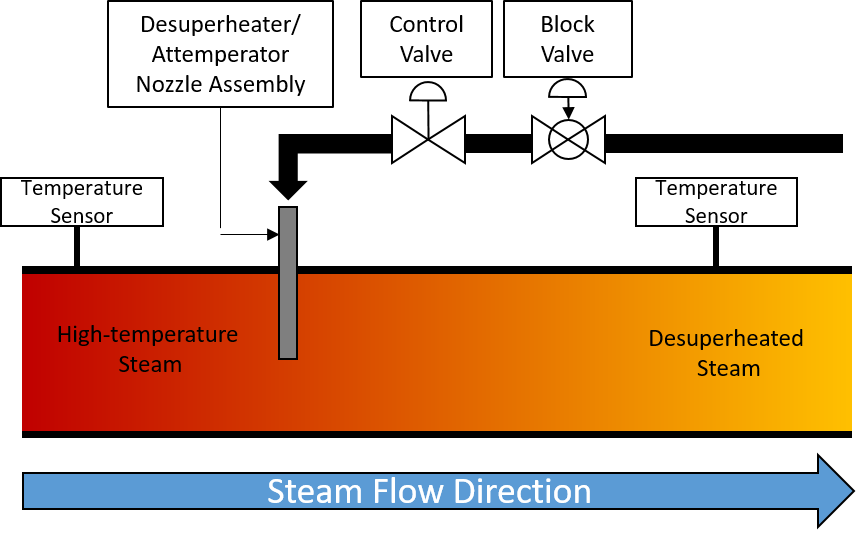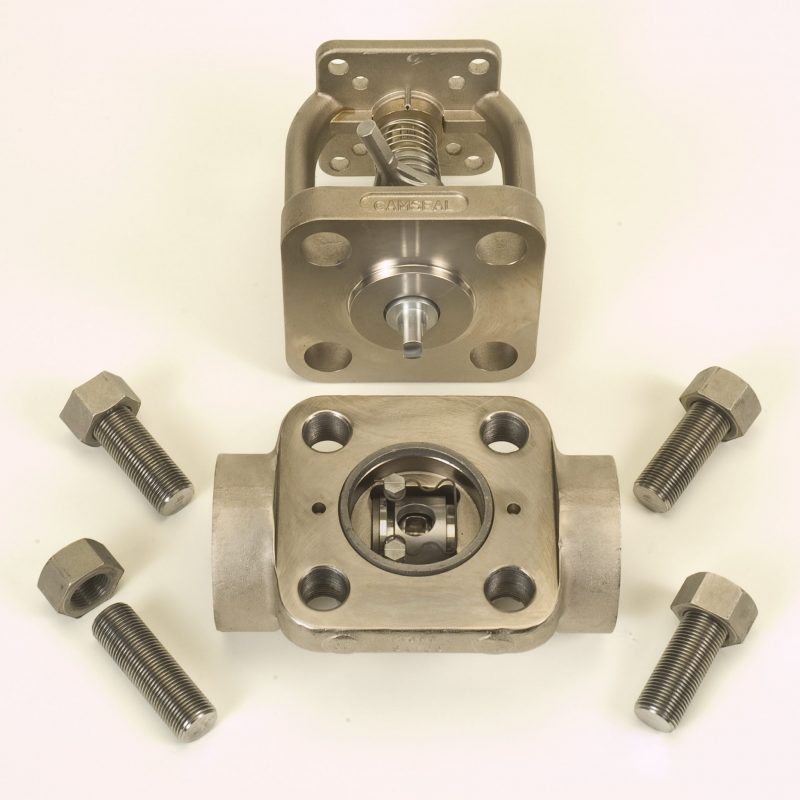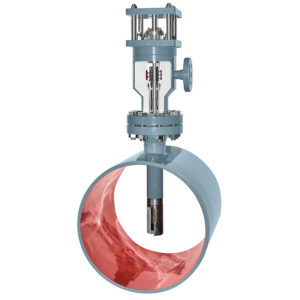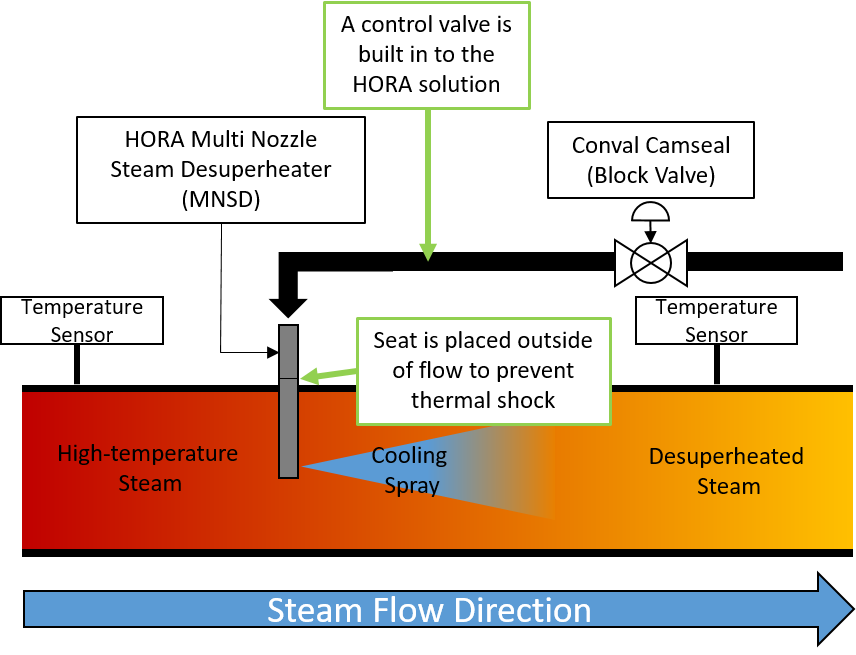Issue
After replacing a leaking actuated main steam attemperator block valve for the 3rd time in 3 years, a Canadian combined utility company contacted Armour Valve in search of a more reliable solution.
The utility company had tried different ball valve options in this severe service application; however, the high cycle rate (~40K cycles/year) resulted in wear and replacement within a year. The high cycle rate was caused by an attemperator that was experiencing temperature control issues.
Previous block valves had to be cut out of line and replaced, which involved material and labour costs, as well as lost production if a valve were to leak enough to force an unplanned shutdown. Facility personnel planned to repair the leaking attemperator and ball valve during the same shutdown in order to address both the temperature control issues and block valve wear.
A metal seated ball valve was used to block the attemperator when there was no demand for cooling water


Solution
Armour Valve proposed the in-line renewable metal-seated Conval Camseal® top-entry ball valve. Conval’s focus on shutoff performance and ball coating integrity, gave Armour Valve confidence that the Camseal® would match the performance of previous valves, while also saving the company time and money by being inline renewable. The Camseal’s® cartridge system would allow the company to quickly renew the valve in-line in just 30-60 minutes (click here for a demonstration).
The Camseal® was installed as planned and maintenance was performed on the leaking attemperator to restore its ability to control temperatures accurately and reduce the frequency of cycling of the block valve.
During attemperator maintenance, it was discovered that the seat had been removed and not replaced after a past repair. This was believed that this was the root cause of leakage and temperature control issues. The missing seat was replaced and both the attemperator and Camseal® went into service.
The Camseal® performed well but continued to require high cycles. After 20K cycles, the utility company realized that the attemperator was leaking once again and would need to be replaced.
Camseal® internals can be replaced in-line to renew the valve.
Armour Valve suggested the HORA Multi-Nozzle Steam Desuperheater (MNSD), a control solution that provided two key benefits to the customer:
- The design prevents distortion of the seat by placing it outside of the steam flow so that it is not thermally shocked when the attemperator injects water
- A built-in control valve regulates flow as required, injects water proportionally to the steam flow, and eliminates the requirement for a separate control valve

The HORA MNSD’s design places the seat outside of steam flow to prevent thermal shock
Impact
Both solutions continue to perform well at the combined cycle facility. The HORA MNSD has provided consistent temperature control since its installation in 2015, without requiring maintenance.
The Camseal® was cycled ~87K times between 2011 and 2019 before requiring its first cartridge change. Despite location accessibility issues, the renewal was completed in about 90 minutes.
By providing an in-line renewable block valve solution and an attemperator that is not susceptible to heat distortion, Armour solved two persistent issues in a severe service application that resulted in reduced maintenance requirements and improved system performance and temperature control at the facility.


